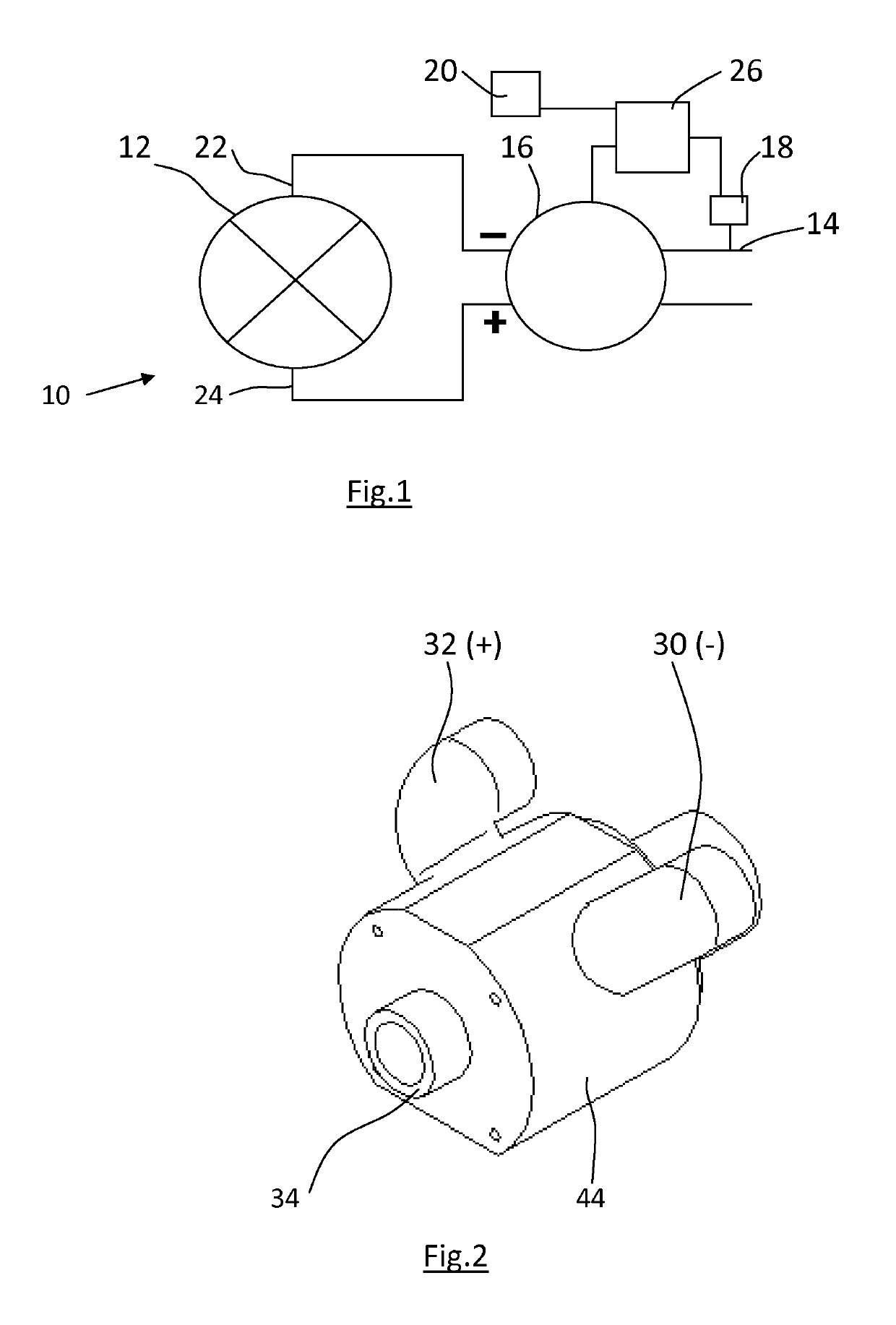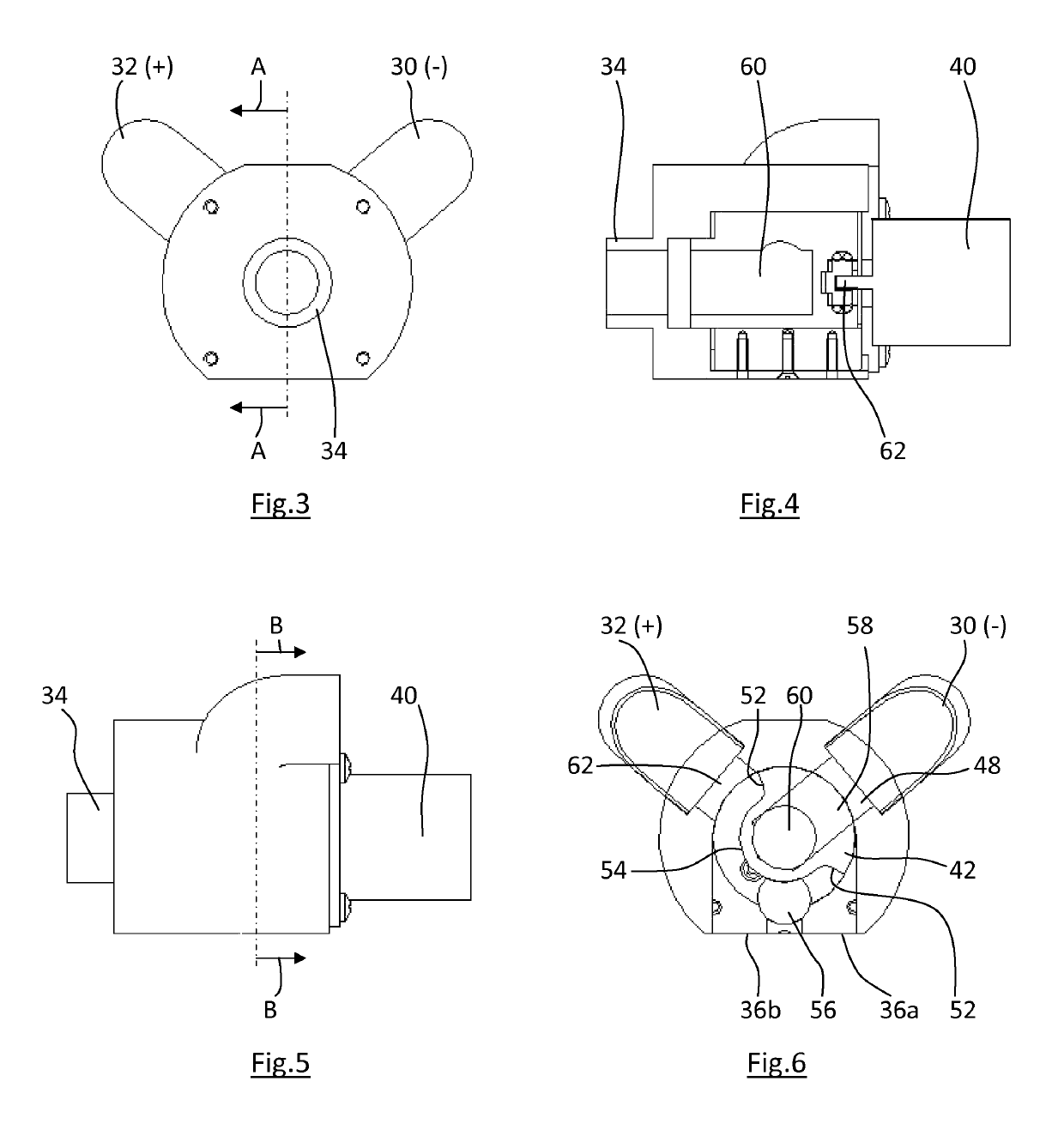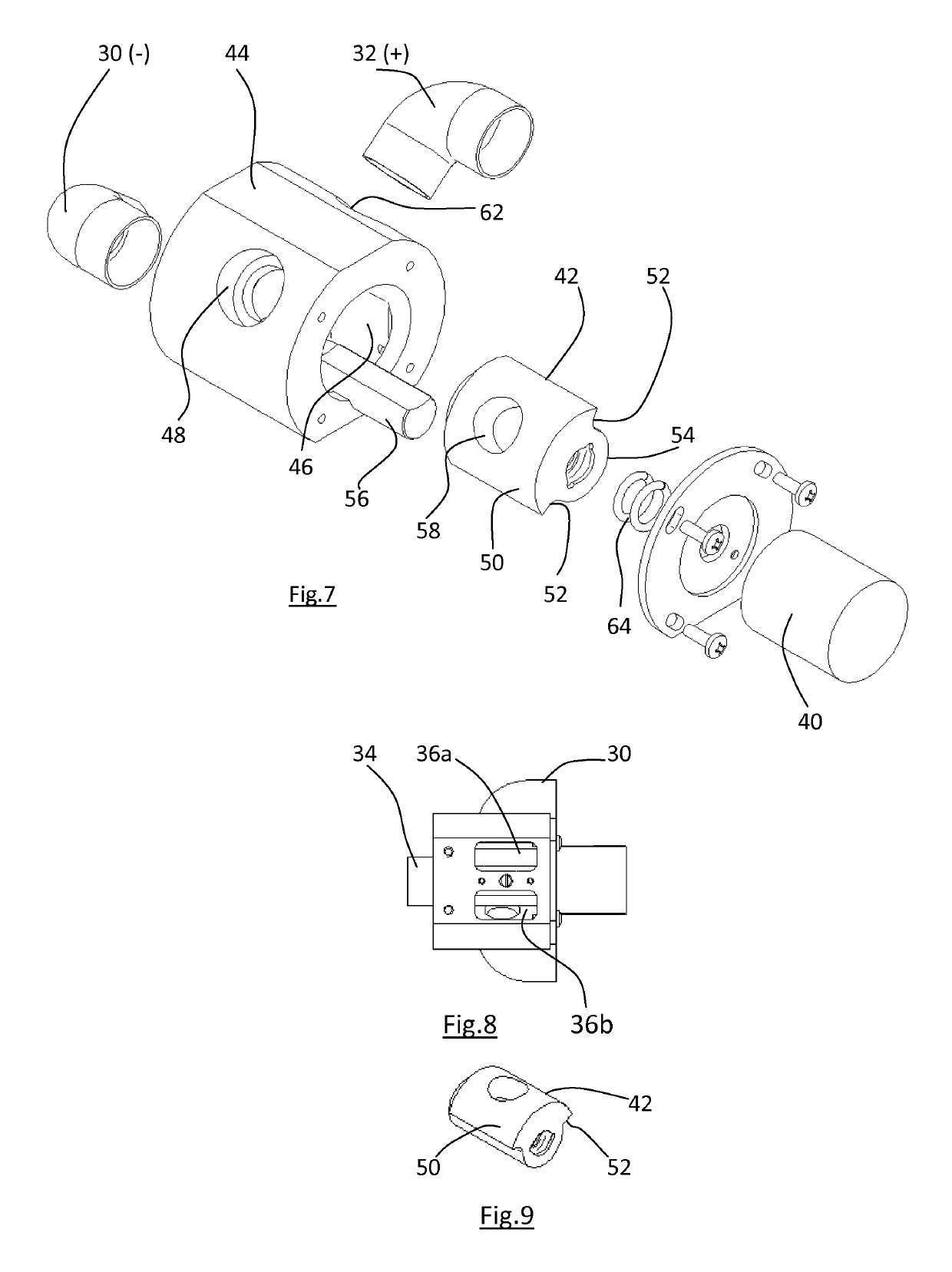Treatment device and method of use
a treatment device and a technology of a treatment device, applied in the direction of medical devices, valve details, operating means/releasing devices, etc., can solve the problems of patient death, patient suffering from respiratory disease, and affecting lung function, so as to avoid vacuum build-up, reduce or avoid pressure build-up
- Summary
- Abstract
- Description
- Claims
- Application Information
AI Technical Summary
Benefits of technology
Problems solved by technology
Method used
Image
Examples
Embodiment Construction
[0028]The invention will now be described in more detail, by way of example, with reference to the accompanying drawings, in which:
[0029]FIG. 1 shows a schematic representation of the treatment device of the present invention;
[0030]FIG. 2 shows a perspective view of the valve of the device;
[0031]FIG. 3 shows an end view of the valve;
[0032]FIG. 4 shows a section along the line A-A of FIG. 3;
[0033]FIG. 5 shows a side view of the valve;
[0034]FIG. 6 shows a section along the line B-B of FIG. 5;
[0035]FIG. 7 shows an exploded view of the valve;
[0036]FIG. 8 shows an underside view of the valve; and
[0037]FIG. 9 shows a detailed view of the valve member.
DETAILED DESCRIPTION
[0038]The treatment device 10 comprises a pump 12, a breathing tube 14, a valve 16, a pressure sensor 18 and an indicator 20. The pump has an inlet side 22 and an outlet side 24. The pump preferably includes an impeller (not shown), although other suitable means of generating the required airflow and pressures can be provi...
PUM
 Login to View More
Login to View More Abstract
Description
Claims
Application Information
 Login to View More
Login to View More - R&D
- Intellectual Property
- Life Sciences
- Materials
- Tech Scout
- Unparalleled Data Quality
- Higher Quality Content
- 60% Fewer Hallucinations
Browse by: Latest US Patents, China's latest patents, Technical Efficacy Thesaurus, Application Domain, Technology Topic, Popular Technical Reports.
© 2025 PatSnap. All rights reserved.Legal|Privacy policy|Modern Slavery Act Transparency Statement|Sitemap|About US| Contact US: help@patsnap.com



